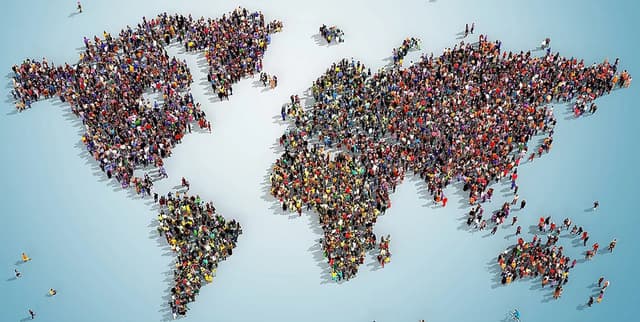International Population Data
Public Safety & Security
Tags and Keywords
Trusted By




"No reviews yet"
Free
About
This dataset provides detailed global population statistics for countries and entities worldwide, specifically for the year 2022. It offers a clear and concise view of the world's population distribution, including key demographic indicators. This data is essential for understanding global demographic trends, supporting research, and informing policy decisions related to population dynamics.
Columns
The dataset comprises 11 columns, offering a range of population-related metrics:
- Country/Territory: The name of the country or territory. There are 234 unique values in this column, all of which are valid.
- Capital: The capital city of the respective country or territory. This column also contains 234 unique and valid values.
- Continent: The continent to which the country or territory belongs. There are 6 unique continents listed, with Africa and Asia being the most common.
- Total Population (till 2020): The total population count up to the year 2020.
- Yearly Change: The annual percentage change in population.
- Net Change: The absolute numerical change in population.
- Density: Population density (people per square kilometre).
- Land Area: The land area of the country or territory in square kilometres.
- Migrants: The net number of migrants.
- Fertility Rate: The average number of children born to a woman over her lifetime.
- Med Age: The median age of the population.
- Urban Population: The proportion or number of people living in urban areas.
- World Share of the Population: The percentage share of a country's population relative to the global total.
Distribution
The dataset is typically provided as a CSV file. It contains 235 records (rows) and 11 columns of data. The specific file mentioned is
countries-continents-capitals.csv with a size of 6.67 kB. The original data sample for the full 235 records would be updated separately to the platform.Usage
This dataset is ideally suited for:
- Demographic analysis: Examining global population trends, growth rates, and shifts.
- Geographical studies: Understanding population distribution across continents and countries.
- Socio-economic research: Correlating population metrics with economic indicators or social development.
- Policy formulation: Informing decisions related to urban planning, resource allocation, and public health.
- Educational purposes: Providing foundational data for students and researchers studying human geography and population studies.
Coverage
The dataset covers population statistics for each country and entity across the globe. The data pertains to the World Population by Countries 2022, with specific details on total population available up to 2020. It includes geographical scope (countries, continents), and demographic scope (total population, age, fertility, migration, urban population).
License
CC0: Public Domain
Who Can Use It
This dataset is valuable for a wide range of users, including:
- Demographers and Population Scientists: For in-depth analysis of global population dynamics.
- Government Agencies and Policy Makers: To inform urban development, public health strategies, and resource planning.
- Researchers and Academics: For studies in geography, sociology, economics, and environmental science.
- Data Analysts and Statisticians: To perform statistical modelling and identify patterns in population data.
- Students: As a reliable source for projects and learning about global demographics.
Dataset Name Suggestions
- Global Population by Country 2022
- World Demographics Dataset
- Country Population Statistics
- International Population Data
Attributes
Original Data Source: International Population Data
Loading...
